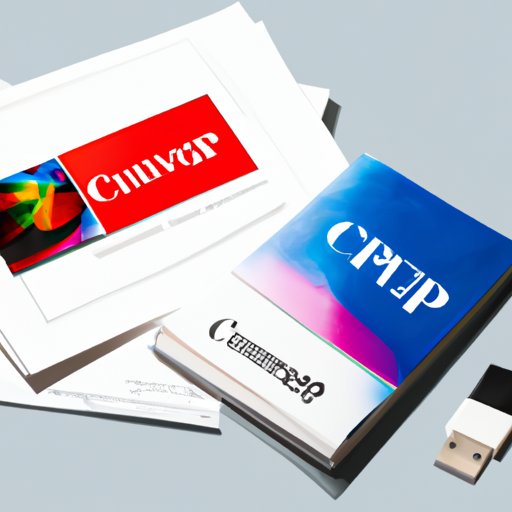
I. Introduction
Converting a photo to PDF is a simple and efficient way of organizing digital files and creating professional presentations. This article provides a step-by-step tutorial on how to convert a photo to PDF, along with the benefits and best practices of doing so. Whether you are a professional or just someone who wants to create a scrapbook, you will find this article helpful.
II. Step-by-Step Tutorial
The first step in converting a photo to PDF is to choose the software or online tool that you want to use. There are many options available, including Adobe Acrobat, Preview on Mac, or online tools like SmallPDF. Once you have chosen your tool, follow these instructions:
- Open the photo that you want to convert in your chosen tool.
- Select the “Save As” option from the File menu.
- Select PDF as the file format.
- Choose the location where you want to save the PDF file.
- Click “Save” to convert your photo to PDF.
Some software or online tools may have slightly different steps, but the basic process remains the same. Here are some screenshots from different tools:
Adobe Acrobat:

Preview on Mac:

SmallPDF:

III. Benefits of Converting a Photo to PDF
Converting a photo to PDF offers several benefits, including:
Organizing digital files
PDF files are easy to manage and organize, especially if you have many photos that you need to keep track of. You can create folders and subfolders to organize your PDF files and make them easy to find.
Professional presentation of images
PDF files are great for presentations or portfolios because they maintain the visual integrity of your images. You can create a professional-looking document with high-quality images that are easy to navigate.
Enhancing security of sensitive information
PDF files are also more secure than other file formats because they can be password-protected or encrypted. If you have sensitive information in your photos, converting them to PDF can offer an extra layer of security.
IV. Comparison of Photo to PDF Converters
There are many software and online tools available for converting photos to PDF. Here is a comparison of some of the most popular options:
Adobe Acrobat
Adobe Acrobat is a professional-level software that offers many features beyond photo to PDF conversion. It is great for businesses and professionals who need to manage a large number of documents and files.
Preview on Mac
Preview is a built-in app on Mac that offers basic photo to PDF conversion capabilities. It is great for personal use and simple projects.
SmallPDF
SmallPDF is an online tool that offers many features beyond photo to PDF conversion. It is great for personal use and small projects. It also has a free version, which makes it an affordable option.
V. Use Cases for Converting a Photo to PDF
Converting a photo to PDF has many use cases, including:
For professional purposes such as printing or portfolio
Converting photos to PDF is great for printing or creating a portfolio. PDF files are easy to share and print, and they maintain the visual integrity of your images.
For personal use such as creating a digital scrapbook
Converting photos to PDF is also great for personal use, such as creating a digital scrapbook or family album. PDF files are easy to manage and organize, and they allow you to create a professional-looking document with high-quality images.
VI. Best Practices for Converting Photos to PDF
To ensure the best results when converting photos to PDF, follow these best practices:
File format and size recommendations
When choosing photos to convert to PDF, use high-quality images in JPEG or PNG format. Avoid using low-quality images or images in other file formats because they may not convert well.
Technical aspects of image conversion
Conversion settings may vary depending on the software or online tool you are using. To avoid losing quality or distorting your images, make sure to choose the correct settings for your project.
Tips and tricks for efficient and effective conversion
You can save time and improve your workflow by organizing your photos before conversion. Create a folder for the images you want to convert and save them in a logical order. Also, make sure to choose the correct file names and file locations to make them easy to find later.
VII. Troubleshooting Common Issues
Common issues when converting photos to PDF include formatting problems and software compatibility issues. To troubleshoot these issues, try these solutions:
Solutions to common problems such as software compatibility or formatting issues
Check your software or online tool’s compatibility with your computer or device. Also, make sure to choose the correct file format and settings.
Recommendations for resolving issues
If you are having trouble with software compatibility or formatting issues, try checking online forums or support pages for solutions. You can also try updating your software or using a different converter.
VIII. Conclusion
Converting a photo to PDF is an easy and efficient way of organizing digital files and creating professional presentations. In this article, we provided a step-by-step tutorial, along with the benefits and best practices of doing so. We also compared different online tools and software and provided use cases for converting photos to PDF. Finally, we offered troubleshooting tips and a recommendation for the best software or online tool for our readers. We hope that this article has helped you in your next photo to PDF conversion project.




